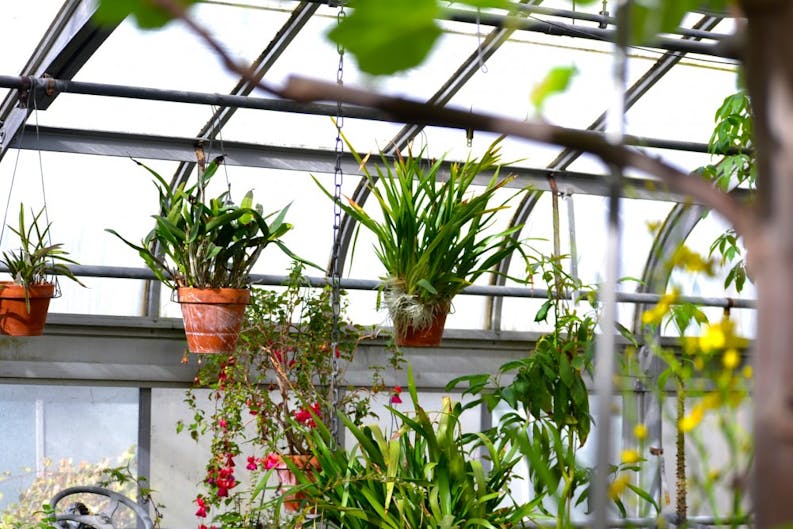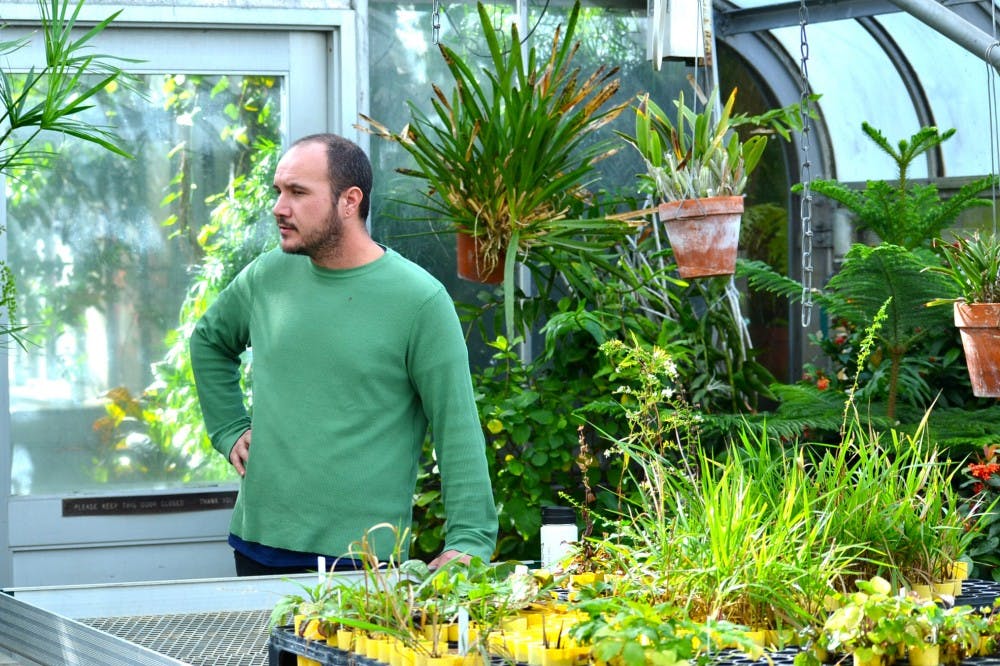The air is humid with thick leaves swaying in the air. Green hues reflect off of the flora. Welcome to the Jordan Hall greenhouse.
The greenhouse has served as an education center and a research laboratory for decades. The greenhouse is trying to focus more on community outreach and interactive involvement. The research side is focusing on immune systems in plants and reducing plant interactions with pesticides.
Greenhouse assistant Tom Pirtle said the greenhouse looks to acquire endangered, rare and unusual plants as part of a conservation effort.
The ground level greenhouse is used for community outreach and visiting classes. The rooftop greenhouses are used for research. There is a lot of push against removing plants from the wild, but Pirtle said when it’s either removal or extinction, the options are limited.
Pirtle said there are numerous species in the Jordan Hall greenhouse that are extinct in the wild. The Venus flytraps currently housed in the greenhouse are nearly extinct in the wild. The orchid Paphiopedilum, characterized by multiple flowers ranging from scarlet to yellow and sometimes called the Venus slipper, is extinct in the wild, Pirtle said.

Pirtle said he hopes the greenhouse will be more interactive soon. He wants to add codes to the plant tags. The tags will allow visitors to come to the greenhouse, scan the code and learn information about the plants.
A lot of his work within the greenhouse is behind the scenes. He mostly works inside the research greenhouses maintaining the plant collection there. When he comes down to the bottom greenhouse, he helps repot plants and sweep the floors, Pirtle said.
Roger Innes, IU biology professor, said the largest science research project that uses the greenhouses looks at how new plant species evolve and adapt to a changing environment.
The research done inside the greenhouse would have been called botany in a different time. However, botany is a more outdated or traditional term and has been replaced by the term plant sciences, Innes said. He said he thought the change came mostly due to marketing reasons.
“Botany started to, in the general public’s mind, refer to people who liked looking at flowers,” Innes said. “Plant scientists are more interested in how plants work at a molecular and cellular level.”
Innes said his research mostly focuses on the immune system of plants and the long-term goal of developing crop plants that have a heartier immune system.
“Right now, our entire food supply is heavily dependent on growing crops using large amounts of pesticide,” Innes said. “It would actually be really hard to currently feed the world’s population if we weren’t using all these pesticides.”
There is a tradeoff, Innes said. The pesticides lower insect diversity, pollute waterways and make humans come into contact with more toxins.
“Most plant research is ultimately aimed at trying to improve agriculture in a way that reduces its impact on the environment,” Innes said.
Pirtle said you don’t have to be a researcher to enjoy the greenhouse. He said he hopes people will walk through the greenhouse and absorb as much information as possible.
“We just want people to come through and enjoy the plants,” Pirtle said.




